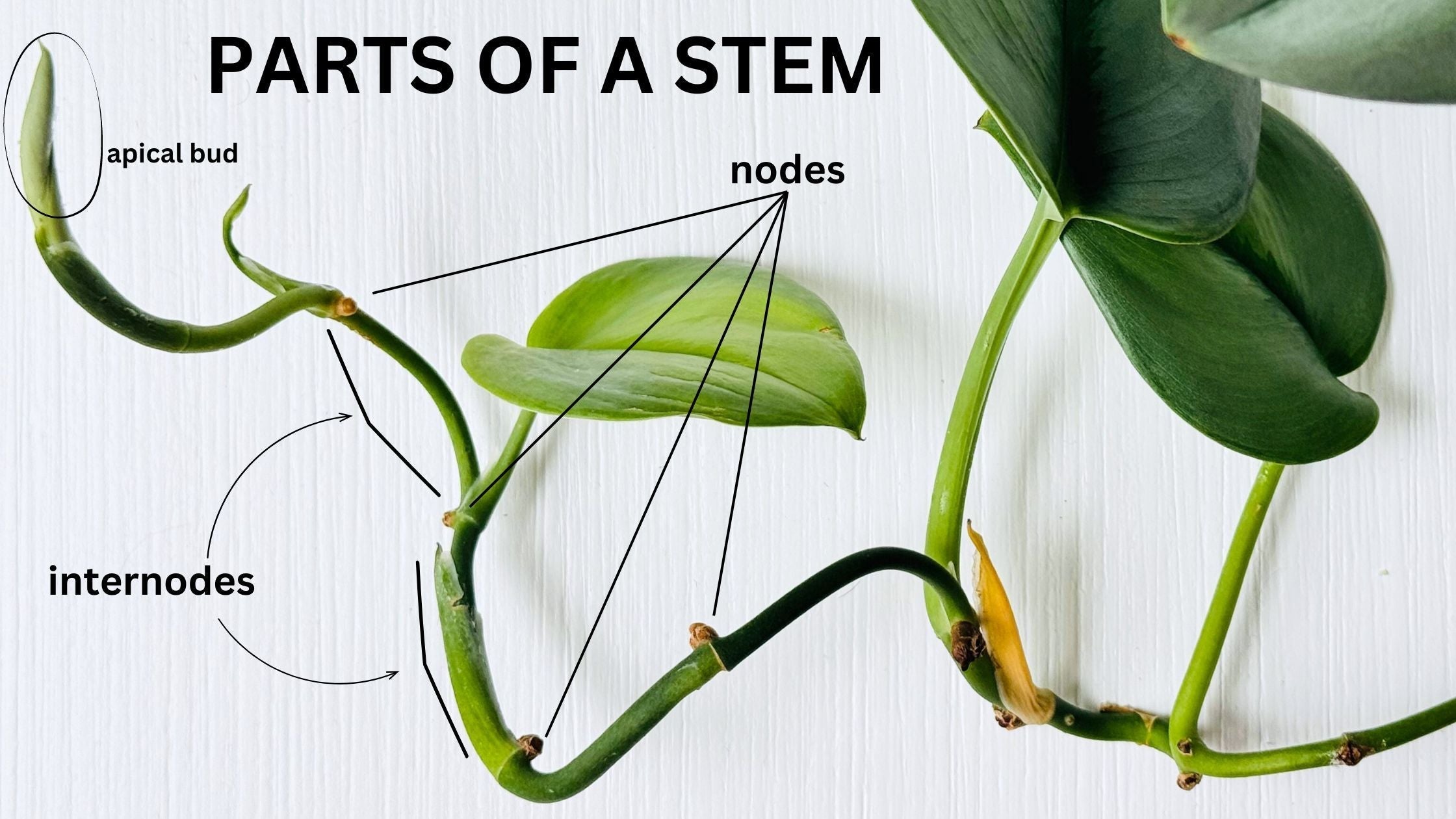
Identifying Nodes on a Plant for Pruning and Propagation
Being able to identify plant nodes is essential for successful pruning and propagation. And if you use keiki paste to generate new growth on your plants, locating nodes is a must because that's where all the growth happens.
What are plant nodes?
Nodes are spots along the plant stem where new lateral shoots (either stems, leaves, or flowers) emerge. Lateral shoots refer to any horizontal growth on the plant. It excludes the vertical growth at the very top of the plant, known as the apical bud.
Given the right conditions, nodes can also produce roots, and these are called adventitious roots.
The spaces in between the nodes are called inter-nodes. Stems, leaves, and flowers only emerge from a node, never from an inter-node.
Basal nodes are located at the very bottom of plant stems just above or below the soil. When propagating with keiki paste, you may experience more prolific success focusing on basal nodes, as they have more direct access to nutrients and water in the soil, which may help support new growth.
Notes on nodes for propagating and pruning
When taking a cutting for propagation, you must sever just below a node for the plant to generate adventitious roots. If your cutting does not include a node, the stem cannot produce new roots to become an independent plant.
When applied to dormant plant nodes (nodes without growth), keiki paste may help support new shoot or leaf development at the node, without needing to cut the stem.
When pruning, you want to cut just above the node to encourage lateral branching and, ultimately, a bushier plant.

Where is the node on a plant?
All plants have nodes somewhere, but they look very different on different species. Some plants have prominent nodes, while others are trickier to locate, and still others are underground! With practice and a bit of guidance, you'll be able to spot most above-ground stem nodes easily.
For most plants with nodes above ground, the nodes resemble joints dividing the stem into sections. Sometimes, nodes appear as indented rings that occur at somewhat regular intervals along stems. They may appear as pale or dark raised rings around the stem. The stem might change angles at each node. You will usually see leaves or other stems growing out of nodes.
In the rubber plant (at the top of this post), you can observe the light and darkened lines on the stems, and in spots where leaves have fallen off, lighter-colored circles appear at the nodes as well.
Plant nodes on stems
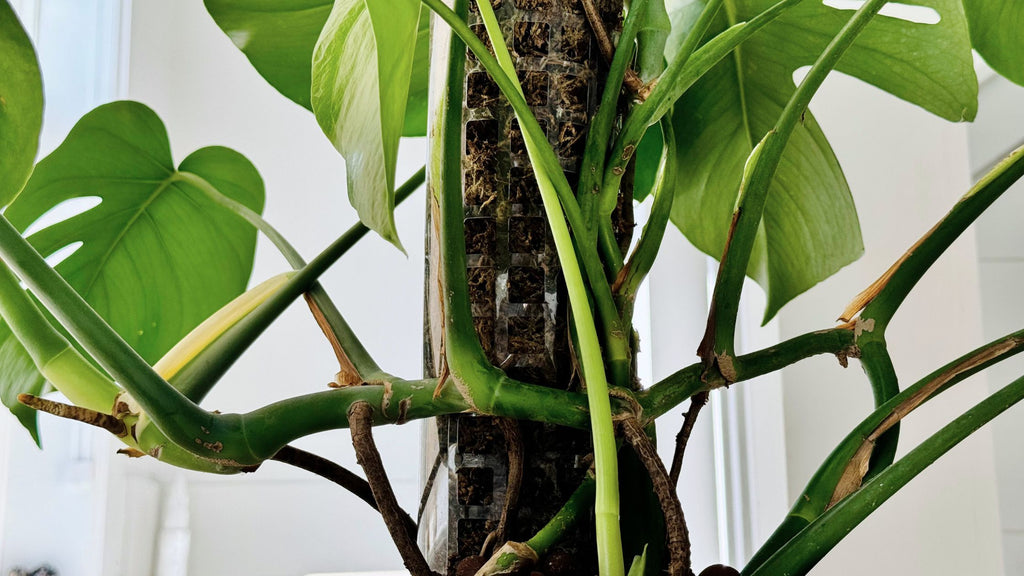
Monstera nodes
Nodes on a Monstera are representative of many tropical plant nodes. They look like joints segmenting the stem with a thin line where it appears two stem sections overlap. There are several nodes in the image above which appear thin and pale in color. Aerial roots, leaves, and stems grow from the nodes.
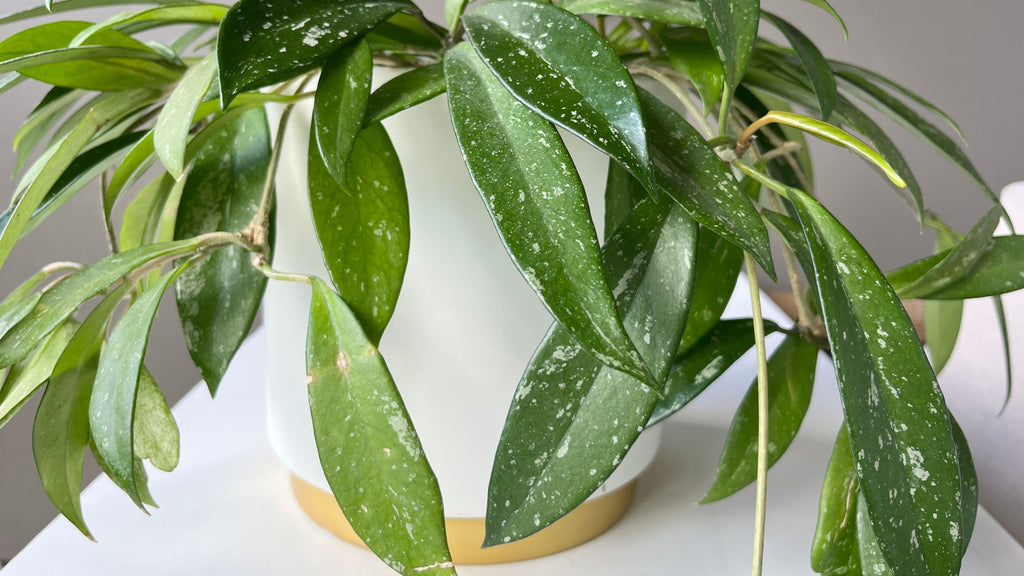
Hoya carnosa nodes
Hoya is a diverse genus of flowering plants with 200–300 species. They vary widely in appearance, from their leaves to their nodes. In the photo above of a Hoya Carnosa, you can see the nodes where the stem branches.
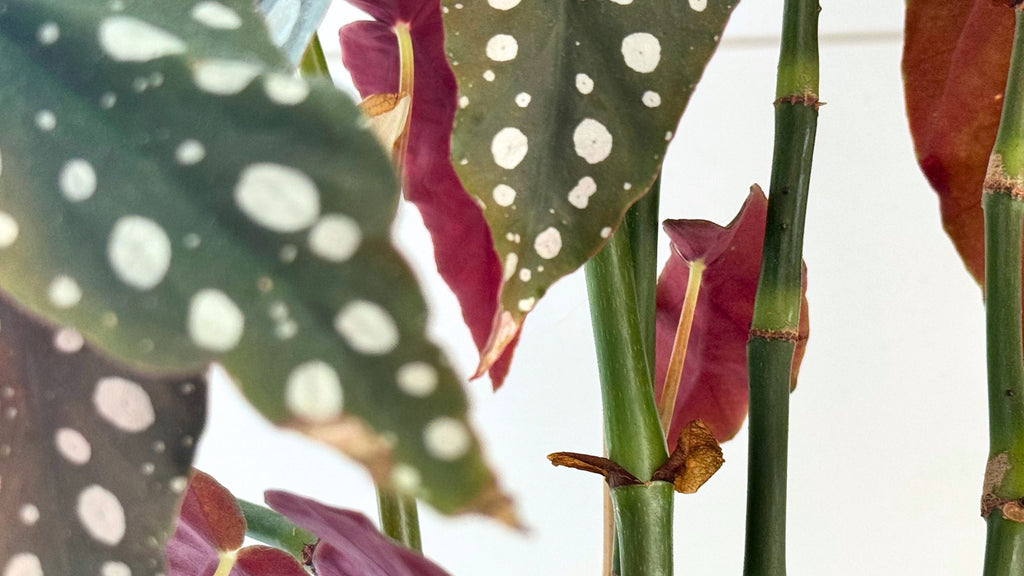
Begonia nodes
The nodes on this polka dot begonia appear brown with a thickening of the stem. Not all begonias have above-ground nodes, though – some have nodes under the soil level, a type of node we will discuss later in this post.
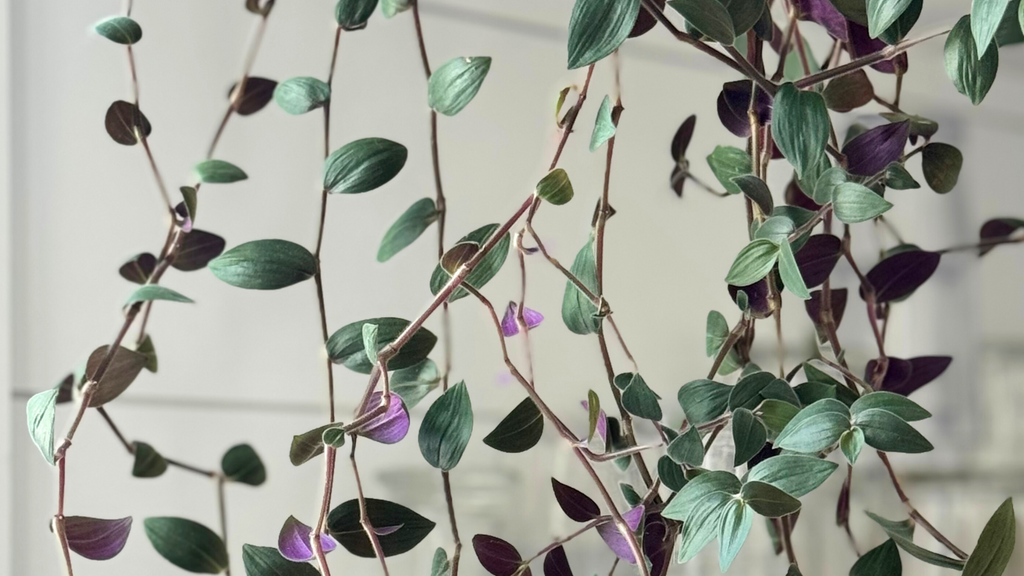
Baby Bunny Bellies nodes
Plants with fragile stems have tiny nodes. These can be easy to miss, so you might need a magnifying glass to find them. The Baby Bunny Bellies (Tradescantia Chrysophylla) above has delicate but pronounced nodes.
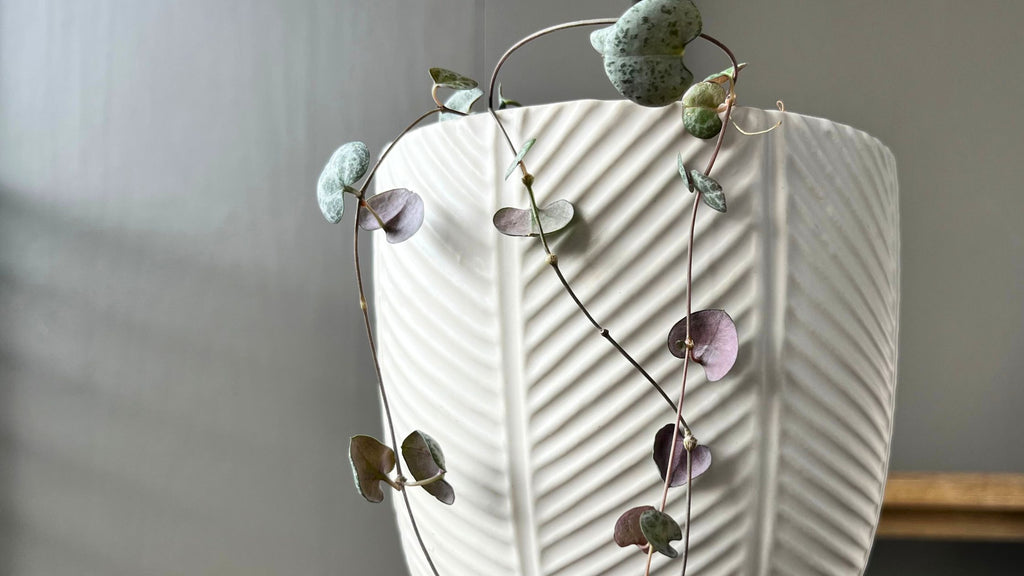
String of Hearts nodes
Nodes on a String of Hearts look like tiny knots on their stringy and trailing stems.
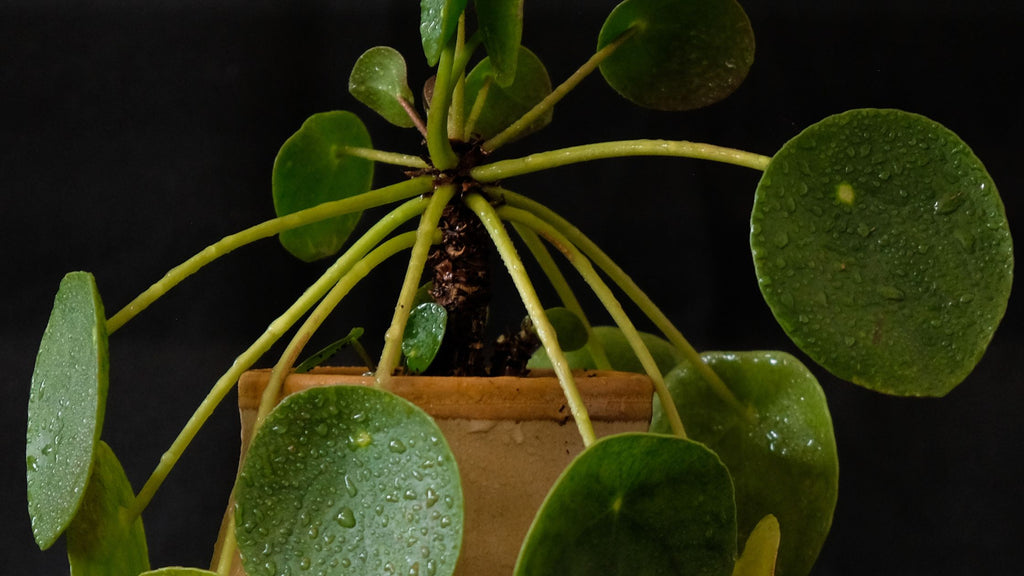
Peperomia nodes
You can observe the nodes on a Chinese Money Plant (Pilea Peperomioides) on its center stalk.

Philodendron Birkin nodes
There are two types of philodendron – climbing (like the common heart-leaf Philodendron hederaceum) and non-climbing. Philodendron Birkin is an upright philodendron with nodes growing out of the center stalk. Both new leaves and aerial roots grow from the center stalk.
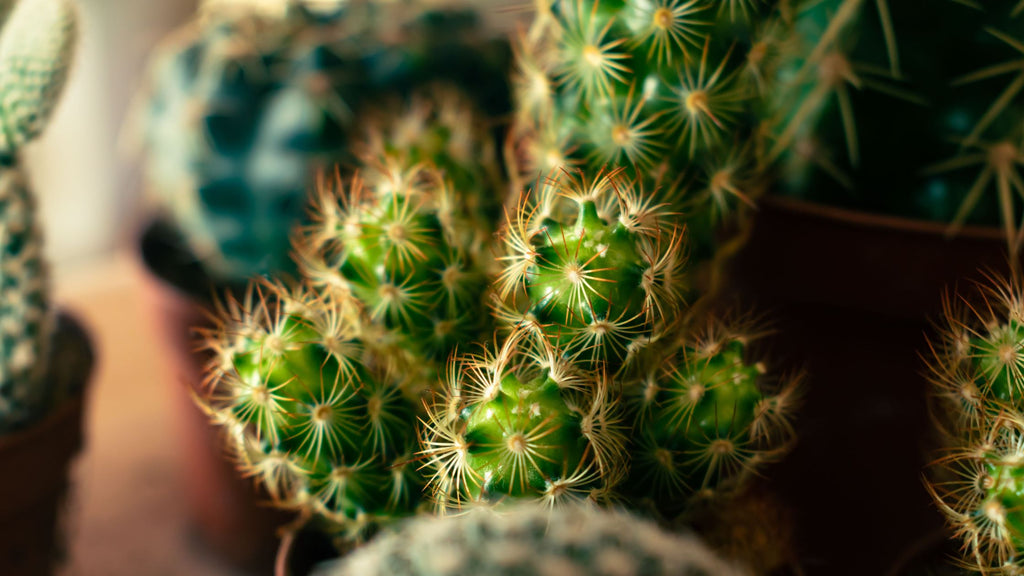
Cactus nodes (areoles)
Cacti have a unique feature called areoles, where nodes are packed very closely together without internodes separating them. It’s as though the entire stem has shrunk into a tiny space. You can spot the areoles by seeing where spines or flowers emerge from the cactus.
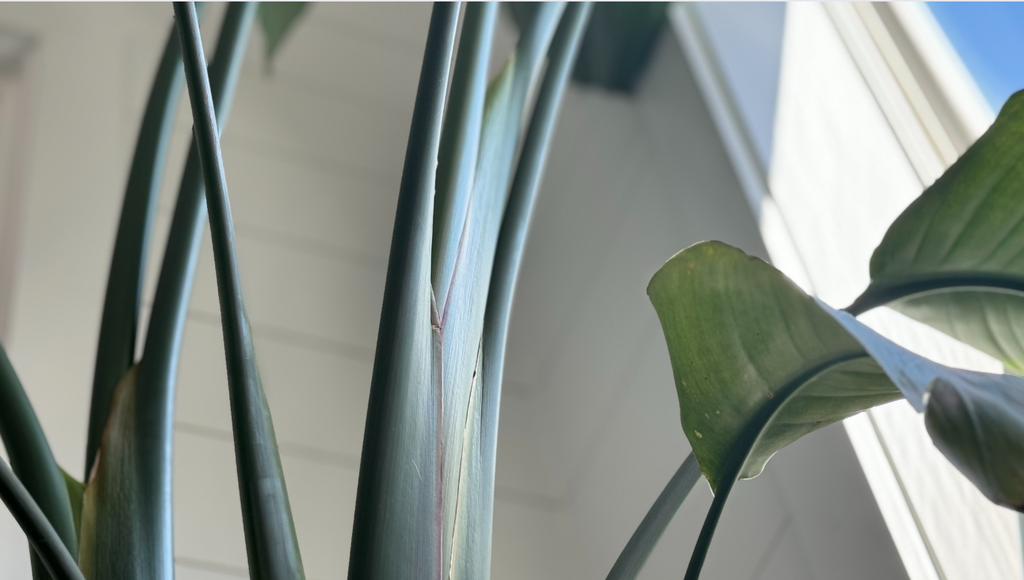
Plants with underground nodes
Have you ever gone to take a clipping of a plant, and you couldn't find a node? Maybe a giant bird of paradise leaf or a small fern frond. And if you put it into water, sadly, it didn't make roots. Well, here's why...
Some plants can't be propagated using their above-ground stems because they don't have stem nodes. Collectively known as geophytes, these plants have bulbs, corms, rhizomes, tubers, and stolons, all forms of underground food storage for the plant. These special plant parts are all actually modified stems, and the nodes of all these plants are underground.
Let's take a look at how different geophytes propagate and grow:
Rhizomes
You may commonly think of ginger or bamboo as rhizome plants. In your houseplant collection, spider plants, snake plants, birds of paradise, ferns (and many more) all have rhizomes.
New stems or roots emerge from nodes in the underground rhizomes, which is why these plants are known to spread. To propagate rhizomes, allow them to spread naturally or divide them manually for new plantings.
Bulbs
Plants with bulbs, like tulips, daffodils, and lilies, do not have stem nodes and are propagated through division. Houseplants with bulbs include Caladium and Oxalis.
A true bulb is a compressed, underground stem called a basal plate. Roots, shoots, scales, and new baby bulbs emerge from the basal plant. Scales are actually modified leaves that the plant uses to store food when dormant. Bulbs grow new scales from the inside each year.
Corms
If you've ever noticed small bulb-like balls in the soil when repotting your Alocasia or Colocasia houseplants, you've already encountered a corm. Corms look like small bulbs but are structurally plant stems with nodes that produce buds and adventitious roots.
Corms can removed and cultivated into new plants.
Tubers
When most people think of tubers, potatoes come to mind first. Tubers are actually swollen stems with multiple points of growth called eyes. A tuber contains all the parts of a regular stem — nodes, internodes, buds. Dahlias and peonies are decorative plants with tubers.
Ready to get started?
Hopefully, you now feel equipped to locate nodes on your favorite houseplants for successful propagation. Still stumped? Let us know in the comments, and we'll help you answer the question, "Where's the node on my plant?"

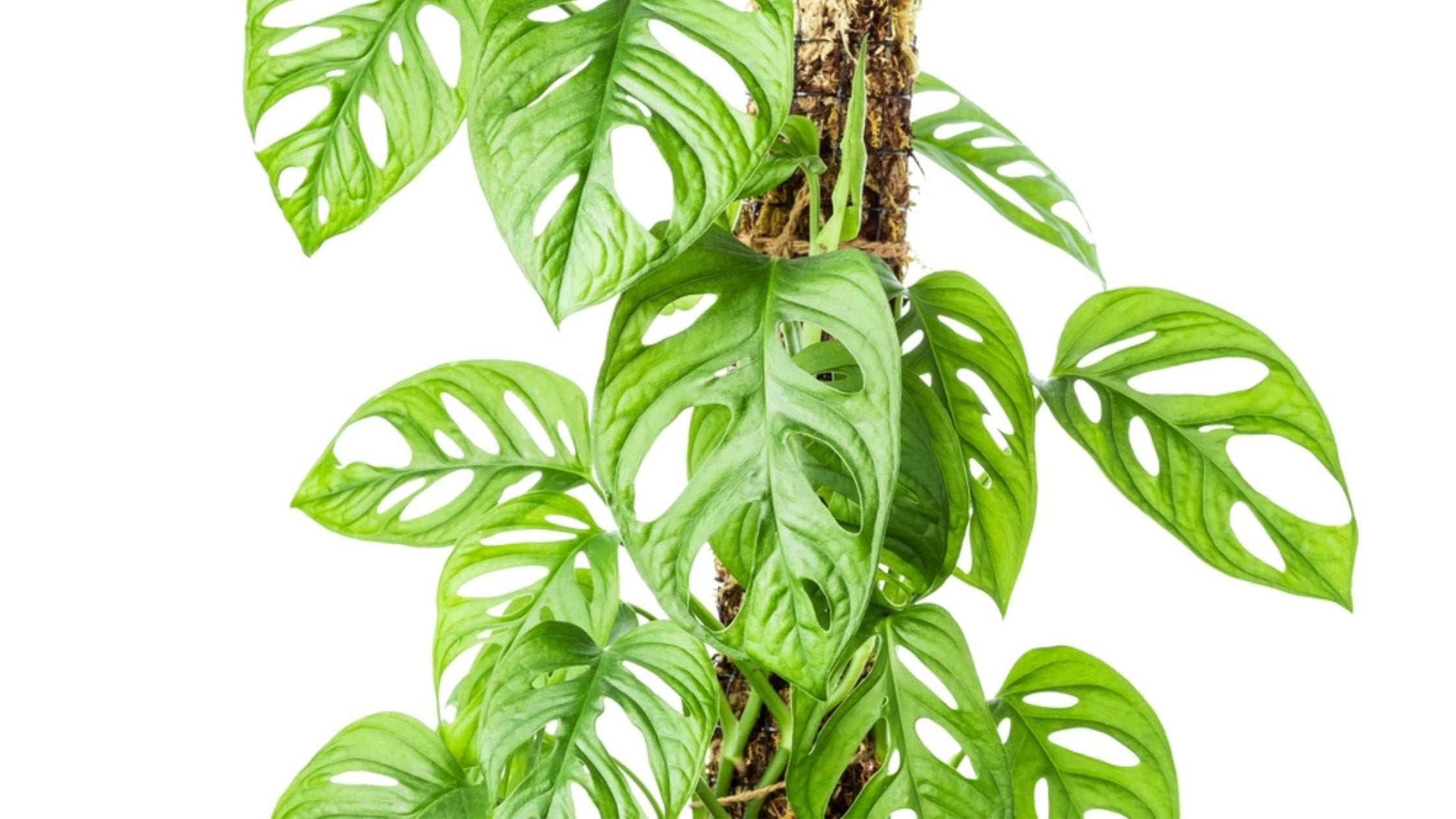

Leave a comment
This site is protected by hCaptcha and the hCaptcha Privacy Policy and Terms of Service apply.